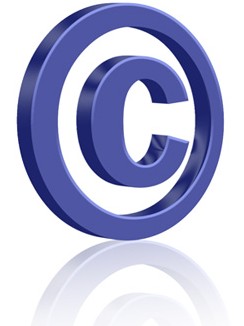Copyright: the exclusive legal right, given to an originator or an assignee to print, publish, perform, film, or record literary, artistic, or musical material, and to authorize others to do the same.
The U.S Copyright Act of 1976, effective since January 1st, 1978, spells out the basic rights of copyright holders and codified the doctrine of Fair Use.
Section 102 of the Act states that “copyright protection extends to “original works of authorship fixed in any tangible medium of expression, now known or later developed, from which they can be perceived, reproduced, or otherwise communicated, either directly or with the aid of a machine or device.” The Act defines “works of authorship” as any of the following:
1) literary works
2)musical works(including any accompanying words)
3)dramatic works(including any accompanying music)
4) pantomimes and choreographic works
5) pictorial, graphic and sculptural works
6) motion pictures and other audiovisual works
7) sound recordings
Section 106 granted the following five “exclusive” rights to copyright holders
- the right to reproduce (copy) the work into copies and phonorecords,
- the right to create derivative works of the original work,
- the right to distribute copies and phonorecords of the work to the public by sale, lease, or rental,
- the right to perform the work publicly (if the work is a literary, musical, dramatic, choreographic, pantomime, motion picture, or other audiovisual work), and
- the right to display the work publicly (if the work is a literary, musical, dramatic, choreographic, pantomime, pictorial, graphic, sculptural, motion picture, or other audiovisual work).
Copyright Infringement: when a copyrighted work is reproduced, distributed, performed, publicly displayed, or made into a derivative work without the permission of the copyright owner.
Reference
copyright.gov/title17



